
A warning for those eating lunch, this article contains pictures of actual baby poop. Don’t say we didn’t warn you...
One thing nobody prepares you for when you welcome a new addition is the sheer volume of poo you’ll encounter – we’re talking up to 15 nappy changes a day and more bowel movements than you can count on one hand. Then there are the colours, textures and that weird-but-kinda-disgusting sickly sweet smell. Good heavens, it’s a lot.
I remember the first time I saw the contents of my daughter’s nappy I genuinely thought there was something wrong with her. Turns out it was meconium, aka a newborn baby’s first poo – it’s a delightful tar-like substance that is thick, sticky and black (or greeny-black) in colour. Completely terrifying to the uninitiated. Honestly like something from another planet.
I’d like to say the only way was up from that point onwards, but we all know that’s totally BS. Every week your baby’s poo seems to change colour or consistency and you find yourself frantically Googling photos of baby turds to make sure their gut isn’t about to explode. Sometimes there’ll be small red dots in there and you freak out. Other times they’d literally explode up the back, requiring multiple outfit changes and bedding changes in a single day.
And then of course they start on solids and the number of daily nappy changes lessens, the poos solidify (sometimes) but the stench ramps up to never-before-smelt levels.
There’s a reason why so many parents love a no-holds-barred conversation about the gut eruptions of their offspring – because the contents of their nappies literally rules their every waking moment. In the first few weeks, it’s likely you’ll be changing your baby’s nappy as many as 12 times a day – sometimes even more. As they get older, this number will (thankfully) half.
If you find yourself boggled by baby poos on a daily basis, here’s a handy breakdown of the totally normal turds you can expect in those first weeks and months – as well as when you might want to seek the help of a medical professional.
The black/dark green poo
Some babies do this kind of poo during or after birth, or some time in the first 48 hours. Think Venom (the comic book character) in turd form: black/dark green in colour, very sticky, very thick. It doesn’t really smell of anything so it gently eases you into the glamorous world of baby poo.
As the meconium works its way out of your baby’s system, their poos might turn a green colour, before turning yellow.
Any black or extremely dark poos after the first week of birth should be investigated as they could indicate blood or some other issue in the stomach or gut.
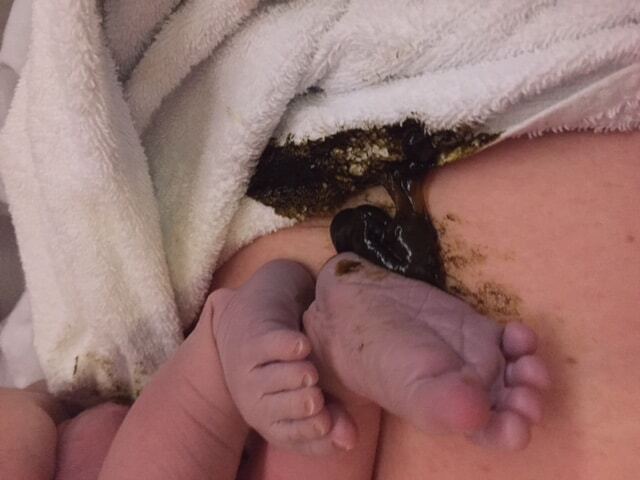
Mustard poos
After a few days – and as your baby adapts to their diet of milk, milk and more milk – their poo will change to a delightful yellow or mustard colour. Yes it looks like your baby has been hitting the kormas hard, which can be slightly alarming, but this is totally the norm.
The consistency may change at this point depending on whether your baby is breastfed or on formula. Breastfed babies tend to have runnier poos which don’t really smell much – they have a faint sweet smell, if anything, and can resemble wholegrain mustard thanks to the presence of little white grainy bits.
Formula-fed babies tend to have firmer poos which are a darker in colour – we’re talking pale brown or even yellowy-green – and a bit more pungent.
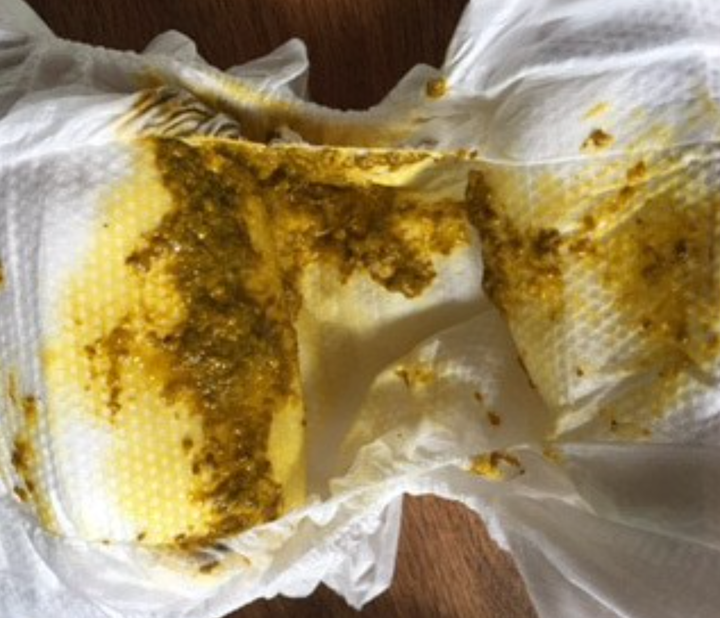
Green poos
Some babies might end up with poos which are dark green in colour. This can be a little bit concerning after getting used to the Colonel Mustards but fear not, it’s often nothing to worry about.
In fact, according to the NHS, some infant formulas can make your baby’s poo dark green. Other reasons why a poo might turn green include: over-supply of milk when breastfeeding, an imbalance of foremilk and hindmilk, if you’re taking any medication like iron supplements or your baby has recently had vaccines, or if they have an infection. Sometimes green frothy poos can signal an allergy to cow’s milk protein.
If your baby is not gaining weight and/or seems generally unwell in addition to the green poos, it’s definitely worth picking up the phone and calling your GP.
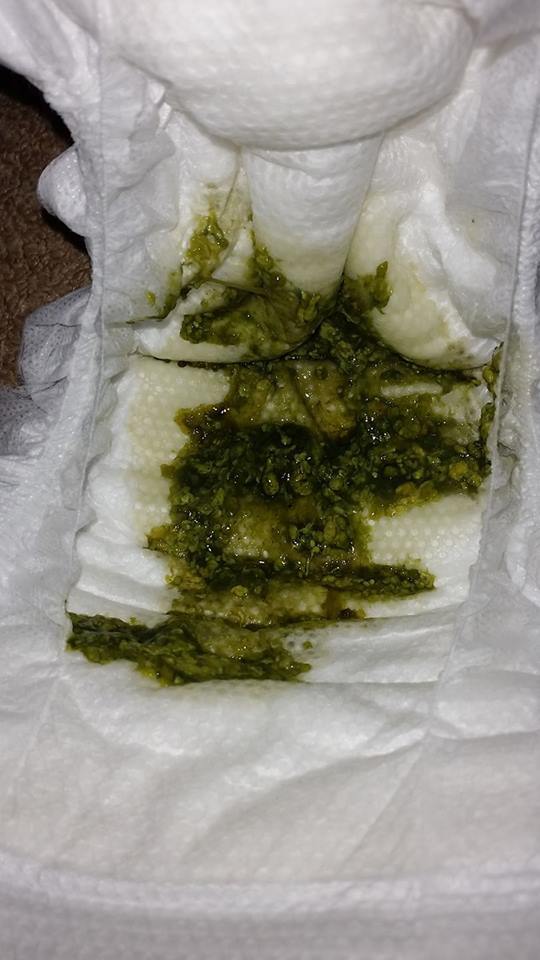
Pink smudges
If you spot pink smudges in your baby’s nappy, or even small flecks of blood and discharge in your little girl’s nappy, do not panic.
Baby girls can shed discharge and even a mini period not long after birth, caused by hormones which have crossed the placenta from mum. These can occasionally cause really light bleeding, but should clear up pretty quickly.
Another reason why you might be seeing red-pink smudges (or ‘brick stains’) in your baby’s nappy is because of the presence of something called urates – these form when urine becomes more concentrated, sometimes as a result of dehydration. It’s particularly common among breastfeeding babies when their mum’s milk is a bit late to arrive.
If you see lots of blood in your baby’s stools or there’s blood in more than one bowel movement, it’s worth getting that checked by a doctor. Blood in poo can signal anything from allergies to constipation to infections. Get immediate help if your baby has blood in their poo and appears severely unwell, has signs of abdominal pain or is crying a lot more than usual.
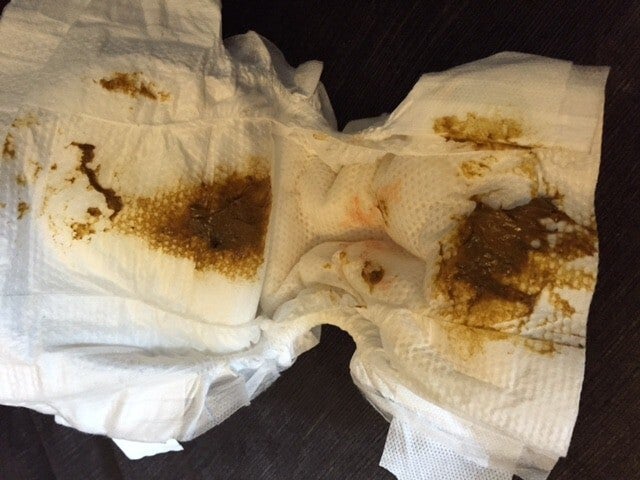
Mucus and watery poos
Sometimes a baby’s poo can come out particularly wet, to the point where it seeps out of the nappy. The general rule is that if your baby has three or more watery poos, they have diarrhoea and it’s worth speaking to a GP. Make sure your baby has plenty of fluids (breast or formula milk for those under six months) so they don’t become dehydrated.
Sometimes if your baby is sick (for example, they have a cold), teething or they’re allergic to something, their poos might become quite wet but also glossy, shiny or stringy which indicates the presence of mucus.
If you think the mucus could be because of an allergy or infection – because they don’t have the symptoms of a cold or teething, and their poos are regularly containing mucus – speak to your GP so they can investigate further.
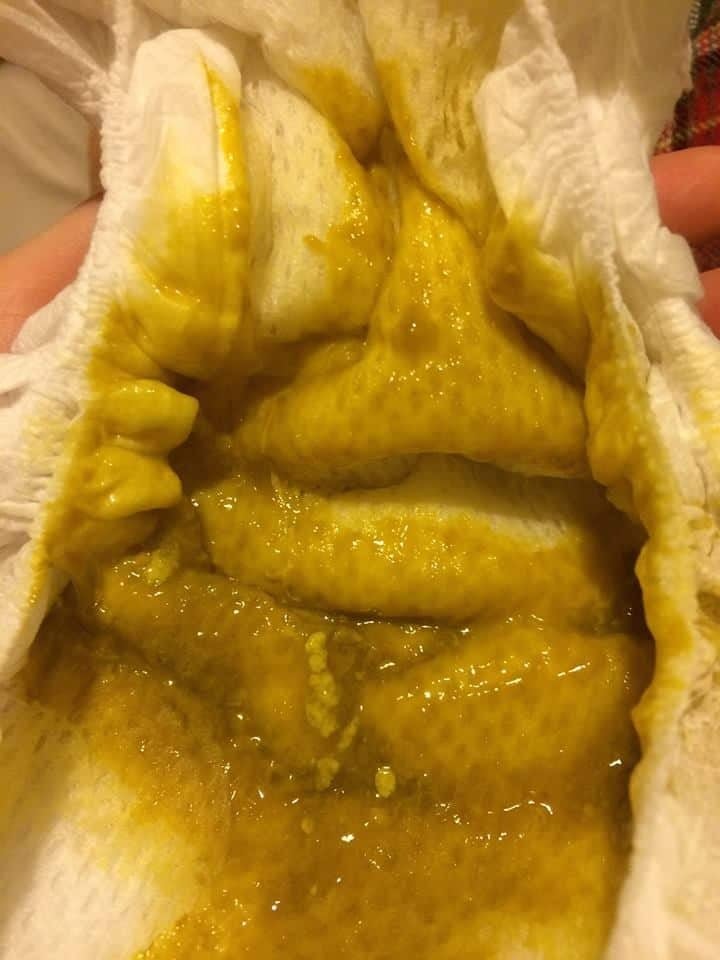
White poos
Unfortunately we don’t have a photo to show you of a white poo as it’s quite a rare occurrence however the key takeaway here is that if your baby’s poo is very pale in colour, you should seek medical help as this could be a sign of liver disease.
Solid poos
At six months, parents are encouraged to start weaning their babies onto solid foods and this is where the fun really begins. Weaning poos are more solid, darker in colour (often reflecting the colour of the food your baby has been eating) and way smellier.
You’ll probably notice they have whole chunks of food in them as well, which is totally normal (and so delightful to witness) – this happens while your baby’s digestive system learns to break it all down. On the whole, your baby’s poos will look a lot more ‘adult-like’, turning brown in colour and forming into chunks or a thick paste.
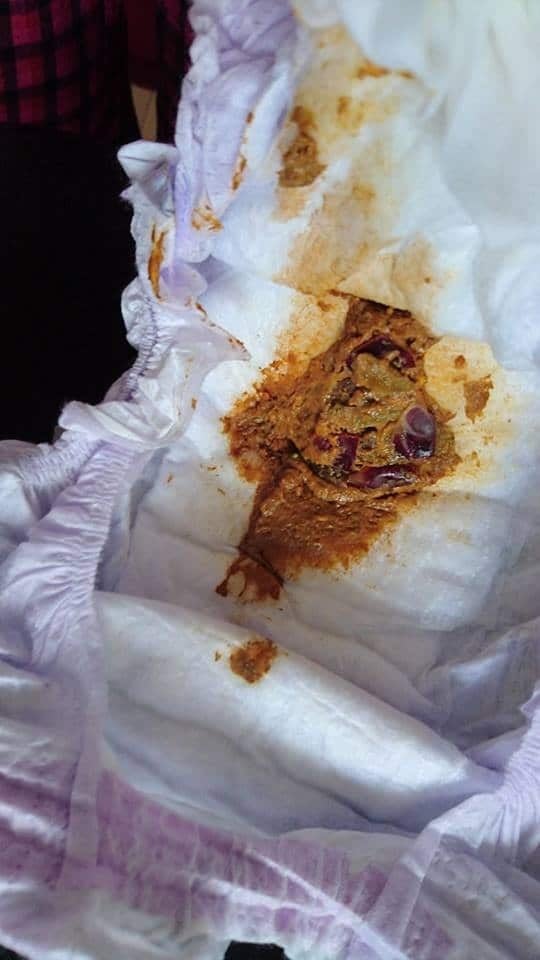
With special thanks to La Leche League GB for providing the photos for inclusion in this piece.